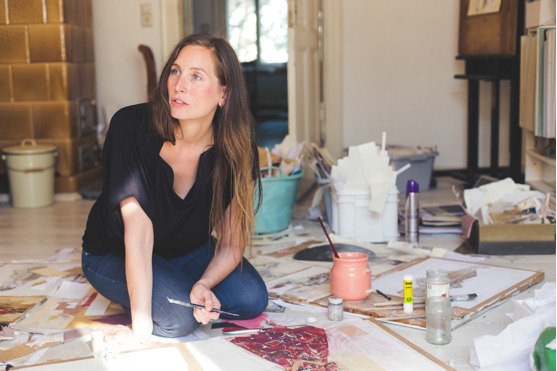Ute Rathmann Artist - Berlin, Germany
Expand on the importance of looking at the work of past Masters in your work?
I am very inspired by the work of past Masters. I tend to arrange my work in series with scenes reminiscent of masters such as Gustav Klimt. A model is dressed up according to a particular theme. This is the visual basis. The end result, however, is not directly connected to the depicted subject but takes on a life of its own.
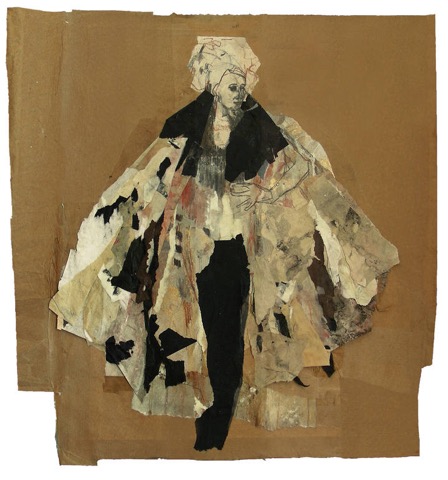
‘Hommage à Gustav Klimt X111’
How do you describe your art medium?
It is a vivid mix of all sorts of mediums. I use pencils, watercolours, pastel, pigments, crayons, etc. Important is their compatibility with paper – and I do not like to use colours that have a chemical smell.

‘Hommage à Degas XXI’
Can you explain how you use Collage in ‘Ewig’?
This special piece is a bit different then most of my other abstract collages. I work with this medium for many, many years and my whole studio is crowded with tons of pieces of paper that are glued together and then torn apart again. From time to time some of those pieces that emerge by accident happen to be so beautiful that I want to use them just the way they are. For “Ewig” I found this one single piece and I just glued it with wallpaper paste on a cardboard.
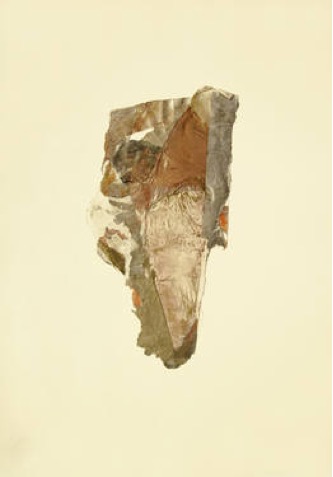
‘Ewig’
Can you take us through the before and after process of ‘Hommage à
Goya XV’?
First of all there was the figure – a draw over a collage. I thought a faint background would fit the best, so I started to use paper in different shades of white. My aim was to show a development from the colourful skirt to the subtle head. I used the paper for the background to create a sharp silhouette of the skirt and I made the skirt longer and more vivid. The upper body stayed the way it was from the beginning.
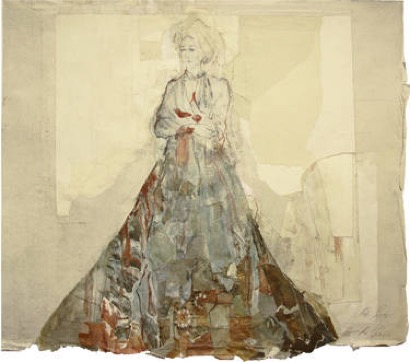
‘Hommage à Goya XV’
Discuss where less is best using Hommage à Degas XXVI.
To me, “Hommage à Degas XXVI” is a very light and soft picture. It always reminds me of “Sternentaler” (“The Star Money”), an old fairytale by the Scandinavian author Hans Christian Andersen, in which a poor girls gives everything she owns away until her gowns and then the stars fell from the sky turning into golden thaler.
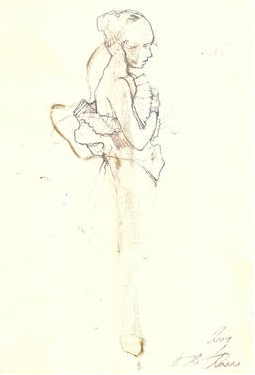
‘Hommage à Degas XXVI’
When do you decide to add colour?
Drawing is a very intuitive thing to me, therefore I do not really `decide` to add colour, it is always a result that just seems to happen.
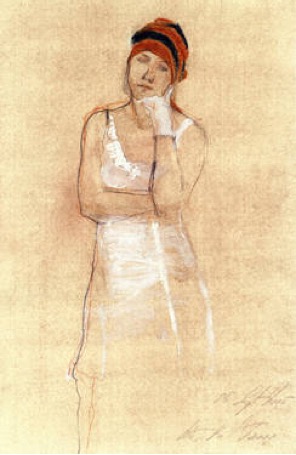
‘Hommage à Ingres XI’
Can you explain where and when you use gold pigment?
I discovered a box with gold pigment while cleaning the studio of my deceased professor Christine Perthen. Since the very beginning using this medium, I fell in love with it. I apply it with a dry brush to achieve a blurred surface area or draw lines with a wet brush. In any case it must be fixed with a very strong spray afterwards.

‘Hommage à Botticelli XIII’
Discuss ‘Tribute to James Goldstein VIII’ and the use of collage and shaped paper?
Usually, I tear the figure out of the drawing to creating a perfect surrounding that highlights the figure. With this piece it was a bit different I did not compose a background, I just used black paper and put some small pieces of silver paper around to combine the background with the figure.
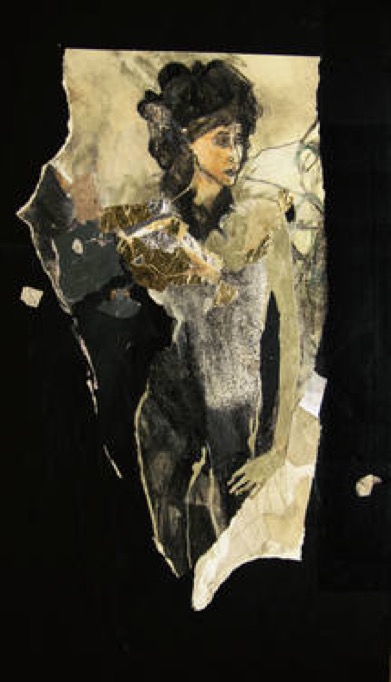
‘Tribute to James Goldstein VIII’
You teach Fashion Illustration. Can you explain the changes you have noticed in the area of art?
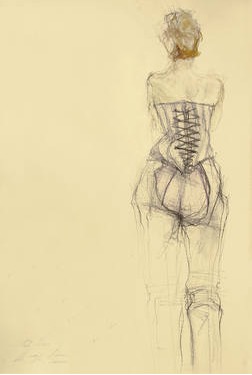
Some years ago, the perception for an artist who deals with fashion in his artistic work was considered as a bit frivolous. But now, there are more and more artists like me, whose work may be described as “fashion art”. It is not “fashion illustration” because it is not created for the purpose of promote and selling fashion. It is more an artistic involvement with fashion.
Fashion is iconic and timeless in your art, can you discuss this?
I have studied fashion-design at the Kunsthochschule Berlin-Weissensee because there has always been a very strong fascination for clothes, costumes, fabrics, patterns, etc. It took me quiet some time to realize that I did not want to design clothes. Instead my artistic aim is to create a special kind of setting I could use as a visual basis for my artworks by using clothes and costumes in combination with a human model.
You also draw nudes – discuss this in relations to being a woman and the depiction of other women?
I also draw male nudes, it makes no difference to me. At this moment I start drawing I am always turning into some kind of a neutral being excited only about the beauty of the composition.
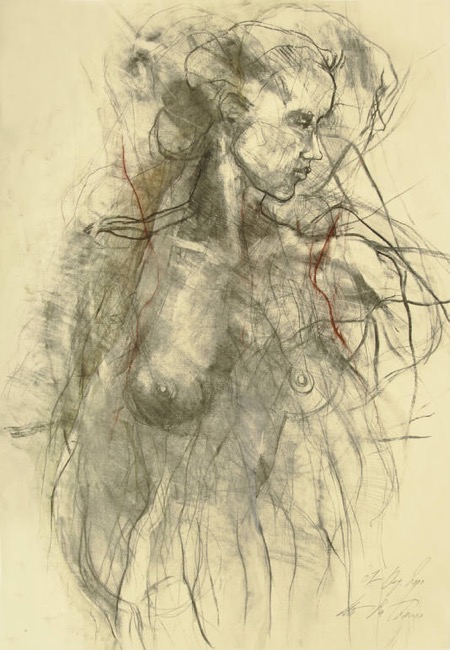
‘Nude IX’
Composition is very important in your work. Please expand on this?
The composition is like a perfectly fitting frame for an artwork. First, there is the figure and then I try to create a surrounding that presents the figure the best.
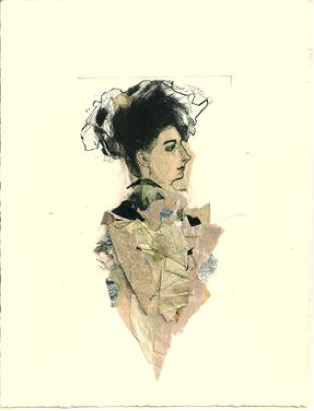
‘Hommage à Cranach III’
Explain about your titles and the numbering system you use?
I sort my works by the name of the Great Masters that inspired the setting. The numbering is not really chronologically because I work so much that somehow I lost the overview. I try to keep at least the series together which are made at the same time.
Do you sign and date your work?
Yes, I do. I sign and date the front or the back of my artworks.
Discuss the use of signed Certificates of Authenticity?
It is very important for my collectors to get a hand signed Certificate of Authenticity. An artwork is something you probably want to leave to your heirs and they might need the Certificate for the eventuality of selling the artwork.
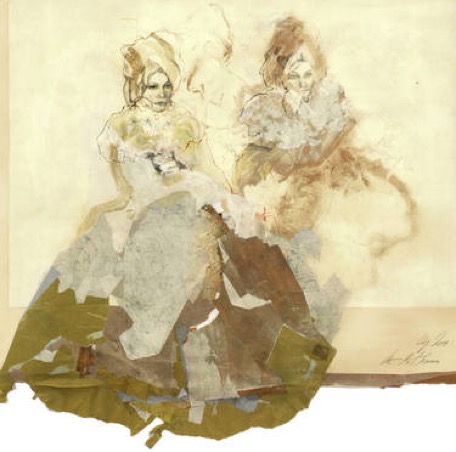
Hommage à Watteau XII’
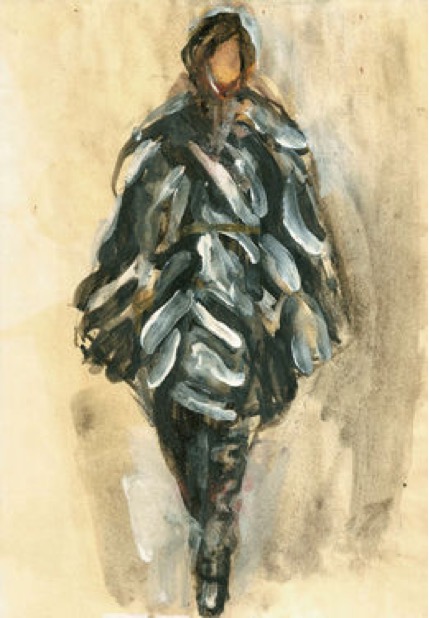
‘Fashion Illustration’
What is the magic of fashion and art – discuss?
I guess it is all about feeling and not about thinking. When I was younger, I felt quiet unsure about my work. I always wanted to capture poetic and magic in my work. A lot of people told me that my drawings are somehow not “serious” enough, too decorative, etc. but the older I became, the more I trust in my own feelings.
Contact details.
ute@uterathmann.com
Ute Rathmann, Berlin, Germany
Interview by Deborah Blakeley, February 2015
Think a colleague or friend could benefit from this interview?
Knowledge is one of the biggest assets in any business. So why not forward this on to your friends and colleagues so they too can start taking advantage of the insightful information the artist has given?
Other artists you may be interested in:


